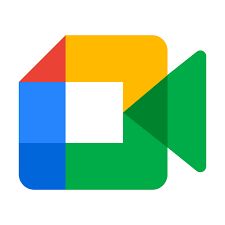
--Online Distance Learning Assignments and Information--
Basic Computer Skills for Working from Home
Learn the technology and collaboration skills for working from home. By the end of this class you will be familiar with collaborating via the Google suite of tools, and Zoom. You will be ready to give presentations, share your screen, and work from home like a pro!
Class Dates (6-8pm on Monday Nights)- January 18, January 25, February 1, February 8
Helpful Links
Zoom Class Link - Google Drive
Class #1- January 18, 6-8pm
|
 Hello- I am "Coach" Casey Burrill Hello- I am "Coach" Casey Burrill
My Website (You Are Here Now!)
New Student Survey
Zoom- The Essentials
- Safety
- Audio and Video
- Chat Room
- Share Screen
- Breakout Rooms
- Backgrounds
- Etiquette
 Intro- Google Drive (Now- Google One) Intro- Google Drive (Now- Google One)
Extra Links to More Information-
|
Class #2- January 25, 6-8pm
|
 Dig Deeper Into- Google Drive (Now- Google One) Dig Deeper Into- Google Drive (Now- Google One)
Next Week Ggoogle Meet
Google Meet is a video-communication service developed by Google. It is one of two apps that constitute the replacement for Google Hangouts, the other being Google Chat
Extra Links to More Information-
|
Class #3- February 1, 6-8pm
|

Play With -
- Log-In to your Gmail Account
- Join our normal Zoom Link
- Discuss anything from Google Drive topics
- Start a Google Meets video conference
- Everyone Join- I will send as a link in our Zoom Meeting chat room
- Play with Google Meet
- Discuss LinkedIn
Extra Links to More Information-
|
Class #4- February 8, 6-8pm
|

Best Options for Working From Home-
- Log-In to your Gmail Account
- Join our normal Zoom Link
- Review List Below
- G Suite- See our last couple classes for more details... Formerly known as G Suite, Google Workspace is a collection of tools that are ideal for employees working from home. The collaborative nature of Google Workspace makes it especially useful if remote workers are required to liaise with colleagues on a regular basis. Applications include video conferencing tool Google Meet, group messaging utility Google Chat, and Calendar - which can be integrated with the diaries of others you work with. For collaborative efforts, Google Sheets, Docs, and Slides allow several people to work on documents concurrently. Then there is Gmail, Google’s email client used by over 1.5 billion people worldwide.
- Zoom- See our first class... Launched in 2012, Zoom saw a spike in users following the COVID-19 pandemic that led many to the platform in order to keep in touch with friends and families. Thanks to its ease of use, the software became the most popular video conferencing app of 2020. For those working from home, Zoom has become a vital means of communicating face to face with colleagues and clients. Its free plan allows for unlimited chats between two people, with a limit of 40 minutes imposed on meetings of more than two users.
- Trello- Trello is a web-based organizational tool that allows users to create Kanban-inspired boards and lists, with an emphasis on teamwork. Over one million teams worldwide are using the service to organize meetings, monitor workflow, and track projects through key stages of development. Simply set up a board, begin adding cards, and invite others whom you would like to use the board. Cards can incorporate checklists, due dates, and reminders, while the drag-and-drop functionality allows you to move cards between columns. The Butler feature allows for the automation of tasks, and is intended to reduce manual processes.
- Slack- “Where work happens” is the slogan that accompanies Slack’s platform, and the company’s tremendous growth in popularity in the last few years ranks it among the world’s most widely used messaging tools. Over 750,000 companies use the software, which offers the benefit of being able to set up a range of channels that can be organized by subject or group, with direct messaging also available. Files can be shared within conversations, while video calls via Slack can feature up to 15 people.
- Dropbox- Founded in 2007, Dropbox is something of a veteran compared to others on this list, but its array of features and ability to sync with a range of devices has ensured that it remains among the most popular file-hosting services around. Although users can access the service by logging in via a web browser, Dropbox offers both a desktop and mobile app, which ensures a more efficient and slicker process to back up, share, and sync your files. Storage starts at 2TB for the personal plans, with business options ranging from 3TB for the professional to 5TB for the standard plan. There is also an advanced option for those requiring more storage, depending on your exact needs
- Freedom- Working from home can bring its fair share of distractions, so for those who struggle with their focus, Freedom is designed to improve their productivity. It does this by eliminating distractions and bad habits, prompting users to set blocks for websites, apps, or even the entire internet depending on their requirements. Blocks can be scheduled for certain times of the day, preventing access to common distractions like Facebook, Instagram, or YouTube during work hours. Freedom also offers browser extensions to complement the app, allowing you to install website pauses and limits, along with insights into your online behavior.
- Evernote- Whether to record minutes for an important meeting, or ensure their best ideas are documented even when they’re on the go, over 200 million people worldwide use Evernote. Evernote syncs across all of your devices and allows you to invite others to share and input notes. The business subscription includes offline note access, the ability to search text inside PDFs, and single sign-on (SSO) login functionality.
- Basecamp- Ideal for home workers who work regularly as part of a wider team, Basecamp is a project management tool designed to assist with communication and workflow. Instead of email chains, Basecamp provides a messageboard for those with access to post updates to and gather feedback from, giving full oversight of an entire project all the way back to day one. The To-Do section lists actions required and aligns them to specific users, with key dates listed in the project schedule. Meanwhile, Docs & Files stores all assets associated with the project. Automatic Check-in allows workers to log their tasks and achievements, giving the wider team clarity on each other’s role.
- Dashline- Working from home has increased the need for sophisticated security measures, particularly when storing, accessing, and sharing files intended for several workers. Having the same password for a variety of logins is discouraged as a security risk, though remembering a litany of passwords can prove tricky, especially when the best passwords should be anything but memorable. With that in mind, those working from home should consider the use of a password manager, and Dashlane is regularly ranked among the best password managers on the market. Multi-factor authentication (MFA) protects your key information, which includes contact details, delivery addresses, and payment information alongside passwords. The premium service includes priority support
- Express VPN- Offices and workplaces often come with the benefit of an on-site IT technician. Without such expertise on hand, employees working from home may be more at risk of security breaches. An effective way to stay safe online is to use a recommended VPN service, which works to secure your home connection. With over 3,000 servers located in over 160 countries, ExpressVPN is regularly among the top recommended VPNs, supporting up to five devices per user with lightning speeds and a high level of customer support.
- Free Online College Classes- While most of these free courses don't offer credit or certificates (unless you pay a certification fee), they are a great way for you to expand your knowledge and keep up-to-date with your industry. Then, there's the benefit of being able to learn anywhere, anytime, and at your own pace. EdX, MIT OpenCourseWare, Carnegie Mellon OpenLearning, Coursera, Stanford Online, etc...
- Some of the Best Open Source Software I Use- The best open source software makes it simple and easy to do common computing tasks without having to pay for a subscription or license fee, for everyone from home to business users. LibreOffice, VLC Media Player, GIMP, Shotcut, Brave, Audacity, KeePass, Thunderbird, FileZilla, and Linux
- PIXLR- Best In Browser Graphics Editor- Pixlr is an excellent choice for editors who need mobility without sacrificing the use of powerful tools. With this suite of image editors, they can use sophisticated editing paraphernalia wherever they are and regardless of which device they are on. Additionally, Pixlr assures users that their images are kept private.
Related Articles-
Related Video-
|
|

 Hello- I am "Coach" Casey Burrill
Hello- I am "Coach" Casey Burrill  Intro-
Intro- 
